The meaning of diversity refers to the variations of different characteristics in a group of people. Diversity in the workplace means acceptance and inclusion of employees of all backgrounds. A diverse workplace is an important asset, since it acknowledges the individual strengths of each employee and the potential they bring. Valuing the differences of others is one of the secrets to a successful, thriving workplace and a fair work culture. While there are infinite different characteristics that makes us unique, such as our cognitive skills, and personal traits along with the things that makes us one of a kind, the majority define diversity by a few social categories, such as religion, gender, race, age etc. However, diversity is not only about having people with different ages, genders, religions, or ethnicities. Diversity is more complex than that and the true value of a diverse team is when different perspectives are seen, heard, and utilized.
It is only in the exchange of different views and perspectives that progress, and development can be achieved. Whenever a group of like-minded people are put together, they will generate similar ideas. This is because their thinking patterns are very much alike. However, if you change things up by mixing diverse individuals together, you’ll have a workforce that’s more prone to creativity and innovation — two important ingredients for success. Different and complementary perspectives can bring new ideas and maybe even better approaches than the “old way”.
We are all unique and have our own ways of seeing things. Each person’s perspective is based on his or her individual character which is shaped by thousands of different parameters, like: education, personality, history, responsibilities. When honoring different perspectives you get the real value of diversity. Diversity goes hand in hand with productivity, research has found that diversifying your team can boost the productivity level by 35%. However, diversity and inclusion require awareness, we need to realize what we are missing and ask for complementary views to understand the full picture. Focusing only on what we see for ourselves is a huge limitation in our capability to develop and perform in our daily work.
When different perspectives and competences are seen as an obstacle, meetings lose their power as they have a tendency to end up in endless discussions about who is right. This is an issue that many leaders are facing on a daily basis.
Diversity is a key ingredient in the recipe for success and should be seen as the competitive advantage it is.
To handle the fact that people see different things we need to clarify how to use those insights in a meeting. It seems to be a bad idea to listen to one view, normally the manager, which will then serve as foundation for the decision making by enlighten people of only his perspective.
In a more target-oriented mindset, probably only people who share similar views will be invited to the same meetings, which will limit the extension of one’s perspective and often it results in a silo-mindset.
Following common sense, a better alternative is to first establish a complementary background by listening to all and then use each and everyone’s expanded overview to look for a common agreement to guarantee high quality and acceptance of the solution.
By handling the meeting in a structured way, you will secure that all people are involved in the solution making process, by utilizing the complementary views we humans have. Handling the fact that people have different views in this way, will secure that diversity is no longer seen as an obstacle but as a complementary force to find the best solution.
